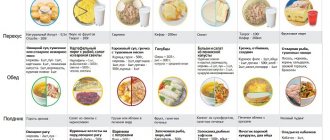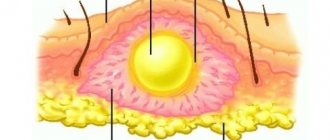It is no secret that in Russia and a number of other countries there is an extremely unfavorable demographic situation. It depends, among other things, on the increase in the number of infertile and childless families. About 25% of all married couples created today cannot have children for one reason or another. Many resort to IVF, undergo long-term treatment, and many decide to adopt children left without the care of biological parents.
Most of these families adopt babies, especially during the newborn period, straight from the maternity hospital. Many even deliberately fake pregnancy in order to become “very real” parents of the baby in the future. But few people now know that the adoptive mother, who did not carry this baby in her tummy, can become partially the biological mother of the baby. This will happen if the mother breastfeeds her adopted baby. But how is this possible?
Steps
Early breastfeeding and frequent feeding
If you want your body to learn how to produce enough milk in the first week, put your baby to your breast as often as possible. Frequent feedings force your body to produce more milk and help you and your baby get used to the process.
- Try to put your baby to your breast immediately after birth.
The sooner you put your baby to breastfeeding, the higher your chance of achieving long and successful breastfeeding. Early breastfeeding gives your body a signal to immediately start the lactation process.
Try to have your baby in the same room with you, or to have him regularly brought in for feeding.
When the baby is close to the mother, her body produces special maternal hormones that enhance milk production.
- If you gave birth in a maternity hospital, try to agree on a shared ward, or ask the staff to bring your baby to you for feeding every 1-2 hours, even at night.
- Be sure to ask your doctor and nurse not to supplement your baby with formula or glucose solution unless it is medically necessary. Sometimes it happens that the child needs to receive additional nutrition, he has some kind of digestive problems, or the mother cannot breastfeed him for medical reasons.
- Offer your breast every time your baby wants to eat.
Do not give your baby a pacifier, and be sure to warn the maternity hospital staff so that your baby is not given a pacifier or bottle-fed. The more often you put your baby to your breast, the more often your body will receive signals about the need to produce milk, and the sooner your baby will learn to breastfeed correctly. The more milk your baby sucks, the more milk is produced.
What to expect
You should know that after giving birth you should not expect to have a large amount of breast milk immediately. In the early days, your body will produce only a small amount of a yellowish, thick fluid, and it can be difficult to teach your baby to breastfeed correctly. Knowing what to expect in the first week after birth will give you confidence and help you have a successful breastfeeding experience.
- Don't expect an immediate flow of breast milk.
- Your milk may come in later due to the medications you were prescribed in case of a cesarean section, or due to prolonged separation from your baby after birth. Don't worry if it seems like it's taking too long for breast milk to appear; most women need at least a week for their bodies to start producing enough milk.
Many women begin producing milk a few hours, or even a few days, after giving birth.
For the first few days after giving birth, you will only produce colostrum. Colostrum is a thick, yellowish fluid that is produced after childbirth. It is very fatty and contains a large amount of antibodies and nutrients that your baby needs. For the first few days, colostrum will be your baby's only food. Don't worry, despite the small amount of colostrum released, this food is quite enough for the growth and development of the baby during this period of his life.
Try to spend as much time as possible with your baby.
Skin-to-skin contact with your baby causes the body to produce special hormones that increase milk production. In addition, this establishes a close emotional connection between mother and baby. When you hold your baby in your arms and press him to your breast, your body receives a signal that it is time to produce milk.
Trust your maternal instincts.
The process of giving birth naturally triggers milk production in your body.
- Unless you have a serious medical problem (which is very rare), the amount of breast milk your body produces during the first week will be sufficient to nourish your baby. A newborn's stomach is still very small, and the baby does not need much milk to nourish him.
As your baby needs more nutrition as his or her digestive system grows and develops, the amount of breast milk produced will increase accordingly. The more milk your baby needs, the more you will produce.
Talk to a lactation consultant
When you're learning to breastfeed, advice from a lactation consultant can be very helpful. Even if you've breastfed successfully before, your newborn baby will be different from your firstborn, and you may have new challenges and questions this time around. Taking advantage of the opportunity to talk to a lactation consultant can help you establish breastfeeding more quickly during the first week after birth.
- Ask for advice from a lactation specialist.
In many maternity hospitals you can get advice from a professional consultant or seek help from an experienced nurse or midwife.
- A lactation consultant will give you lots of helpful tips, show you how to properly latch your baby to the breast, and tell you how often you should feed your baby, what the consistency of the milk should be, and any pain or discomfort that may be present. You will learn a lot about your baby's appetite and how milk is produced in the body.
You can ask a consultant to visit you in hospital or arrange for a consultant to visit you at home after you are discharged.
- Share with him your questions and concerns about feeding.
Tell your counselor about your difficulties and questions as early as possible so that they can help you resolve these issues as quickly and efficiently as possible.
- Most often, the consultant suggests that you feed the baby in his presence. So you can go through the process step by step and get practical help, advice and answers to any questions you may have.
- Be prepared that the feeding process may be painful.
Sometimes you have problems while breastfeeding that cause anxiety, especially if you are breastfeeding your first child. If you're worried you're not producing enough milk or breastfeeding is causing nipple or breast pain, talk to a lactation consultant. They will give you advice on how to change your feeding position or recommend nipple cream, as well as additional tips on how to increase your milk supply and make breastfeeding enjoyable and effective.
- If you were unable to feed your baby during the first few days after birth because you were unconscious, recovering from a cesarean section, or your doctor recommended postponing breastfeeding for medical reasons, you will have a more difficult time establishing breastfeeding. Tell the health care team that you want to start breastfeeding your baby as soon as possible. Ask your doctor to help you stimulate lactation and tell him that you want to feed your baby breast milk at all costs. The earlier you start the process, the more likely you are to succeed.
- Feel free to ask other women about their breastfeeding experiences. They can give you lots of helpful advice and build your confidence that you can breastfeed your baby within the first week and continue breastfeeding successfully for a long time.
- Don't forget that breastfeeding, despite all the difficulties, is a natural mechanism for feeding a baby. Your body will be able to overcome all difficulties, and you will be proud that you did so much and provided your baby with adequate nutrition.
The basis is the desire of a woman!
According to WHO, there are many women around the world who have adopted a newborn baby and successfully fed it with their breast milk. Moreover, the women were not pregnant and had not given birth before! This is real, since the mechanism of milk formation is known. It is produced and secreted by the mammary glands under the influence of hormones from a special endocrine gland in the brain - the pituitary gland.
The pituitary gland obeys signals from the cerebral cortex and is controlled by the higher nervous activity of a woman. Because of this, the psycho-emotional coloring of motherhood is formed, the influence of a woman’s feelings and emotions on lactation, both in a positive and negative way. If a mother has strong maternal feelings towards the baby, she is convinced of the necessity and importance of breastfeeding, she will be able to feed even an adopted baby.
Endless love for the baby and the mother's enthusiasm and determination will be the triggers for both inducing lactation and maintaining the amount of milk at the proper level. It is also known that it is the baby who begins to initiate the process of milk formation, by sucking, stimulating the mother’s breasts and stimulating her hormones and the entire endocrine system to produce breast milk.
That is, in order to stimulate or re-induce lactation, to increase the amount of milk if it has become critically low, two essential conditions must be met:
- The desire of the mother herself to breastfeed her child exclusively and complete confidence in the success of her maternal strength and efforts. It does not matter whether this fact concerns the induction of lactation, relactation or an increase in the amount of breast milk. It is important to honestly answer the question - are you ready to be patient and consistent, persistent and calm, confident that you will fulfill your destiny - to be a nursing mother. It is also important to be prepared to fully and accurately follow all the recommendations of an experienced pediatrician and lactation consultant. They will help in word and deed, but much depends on the nursing mother herself.
- The child's desire to attach to the breast and suckle. But, if at the same time the child remains hungry, latching onto the “empty” breast, then he will quickly lose the desire to latched and again take the breast in the future. That is, when attached to the breast, the baby should not starve until the amount of milk is sufficient.
It is impossible to feed the baby with donor breast milk during this period due to the risk of infections. You also cannot feed him with animal milk (cow, goat), so only special adapted baby food in the form of formula is recommended for feeding. They should be selected by a pediatrician who, together with a breastfeeding specialist, will support and guide you.
Warnings
- If you experience severe pain or your breasts don't seem to be releasing any fluid at all, tell your doctor or nurse. Sometimes, in order to stimulate lactation, it is necessary to take medications. In other cases, you will need special stimulating measures to establish lactation, and you will have to consider supplementing your baby with formula to ensure he gets the nutrition he needs.
This will contribute to the good quality of milk - the only type of nutrition for the baby in the first months of his life. In addition, breastfeeding will be a rather painful procedure for your nipples, and therefore, throughout the entire second trimester, expectant mothers are advised to wear bras with an inner liner made of hard fabric. Such a natural massage will moderately roughen the nipples, and the first breastfeeding will be easier. At the same time, it is not necessary to continue their stimulation in the last trimester, so as not to provoke premature birth.
Prohibitions during breastfeeding
Lactation is a crucial period. Therefore, there are a number of prohibitions for nursing mothers, so as not to harm the baby:
- Alcohol and cigarettes are prohibited. In medical institutions, cases of death of children due to alcohol consumption by mothers have been recorded.
- In the first months of your child's life, avoid chocolate and citrus fruits. Even protein foods can cause a reaction in the baby. During this period, the growing body is very weak and reacts painfully to many foods and external changes. An allergic reaction is not uncommon during breastfeeding. But in order to develop an addiction in the child’s body, it is worth eating these products little by little. But always then observe the baby’s reaction.
- Do not take medications without a doctor's prescription. This also applies to biological supplements and vitamins.
Don’t worry for the first time during the days when there is no milk yet that the baby will remain hungry - colostrum will be quite enough for him
Start of feeding
Regardless of whether you give birth traditionally or via cesarean, such nuances do not affect. The calorie content of this specific substance is very high, and the content of microelements that are essential for a child is simply fantastic (the list includes more than 40 items). In this regard, breastfeeding for the first time is recommended literally immediately after the baby is born.
Full-fledged milk will begin to be produced by the mammary glands much later, approximately on the third to fifth day. From this time on, you should limit the amount of liquid you drink and under no circumstances drink cow's milk - in the first case, the breasts will become overly full, and in the second, the baby may develop colic.
This drinking regime should not be disrupted until the moment when the feeling of “petrified” breasts ceases to appear.
A little about lactation as a physiological process
As mentioned, lactation is a natural process during which the synthesis, accumulation and further release of a specific nutrient - mother's milk - occurs. Lactation is an extremely complex process. It is caused by the production of a number of hormones. The main active substance affecting milk production is the pituitary hormone prolactin.
It directly affects the mammary glands, giving them a “command” to produce milk. The intensity of production directly depends on the concentration of the hormone in the blood. Milk accumulates in the glands themselves and in the so-called milk ducts, through which the milk comes out.
Another hormone important for lactation is oxytocin. This active substance is intensively produced during the process of suckling by the baby of the mother's breast. When muscles contract, milk leaves the body faster. The hormone does not directly affect the intensity of milk production, but it helps it to be evacuated faster, which means it prevents stagnation of milk and the development of such dangerous complications as lactostasis and mastitis. In addition, oxytocin helps to contract the muscles of the uterus, and therefore quickly stop postpartum bleeding.
The first two to three days after birth, mothers do not yet produce milk, but colostrum is released. In some cases, colostrum begins to be synthesized during gestation.
It is important to keep in mind: during stimulation of the mammary glands, the hormone oxytocin is released, so women who have colostrum late in pregnancy should not express it. Oxytocin promotes uterine contractions and the onset of premature labor.
Colostrum is replaced by mother's milk approximately 3-5 days after the baby is born.
In the first days of life, colostrum is enough for the baby. You should not supplement your baby with formula milk or anything else.
What position is best to feed?
There is no single standard in this regard, since the best position is always considered to be the one that is most comfortable for both - mother and baby (in addition, photos of various feeding methods can be seen on the Internet).
Side lying feeding
This position allows you to comfortably use both the top and bottom of each breast. In addition, in this case, the child can also be easily placed on his side (as an option, place a pillow under his head). If suction from the upper part is difficult, which sometimes happens when congestion forms in it, the most successful position would be the “jack” position, in which the baby lays its legs to the mother’s head.
Sitting feeding
If mommy is not sleeping and is not tired, the sitting position is even better. Firstly, in it the mother’s hands play the role of a cradle for the child. Secondly, when placing the baby’s head on the inner bend of the elbow of one hand and pushing the palm of the other under the back, it is very easy to control the baby’s position - adjusting it to the most comfortable and correct for sucking.
Pumping
Often a serious problem for women is not only a lack of milk, but also its excess. Of course, if it is possible to use additional feeding instead of pumping, the issue resolves itself, but this does not happen so often. What to do in other cases? To begin with, express only when pain and obvious tension appear in your chest. Moreover, a balance needs to be found here too - if there is insufficient removal of excess, you can gradually come to mastitis, and if there is excess, “to the last drop,” you will get an ever-increasing milk production, expressing which will take more and more time and effort.
Be that as it may, it is necessary to master it, and it is best to take lessons from an experienced midwife (or any other woman whose practical skills in this matter are beyond doubt).
Finally, some mothers try to simplify their lives by expressing milk in the evening in such an amount that the baby has enough for night feeding (of course, someone at home will feed the baby from a bottle). No one questions the fact that even 6 hours of full sleep for the mother of a tiny baby is almost manna from heaven! However, experts do not recommend doing this for three reasons. The first is guaranteed breast congestion and wild pain the next morning. Secondly, expressing such a volume of milk one time (feeding itself + a portion at night) will start a vicious circle of its overproduction. And thirdly, the child’s subconscious receives information that there is a method to get drunk with much less effort - the consequences of which we talked about above.
Cracked nipples
The first days of feeding your breasts always hurt a little - and you have to put up with it. And the appearance of cracks on nipples that are too tender is an inevitable consequence of their constant deformation during active sucking by the baby’s mouth. To get rid of pain, at least for the second reason, from the very first days of feeding, the nipples need careful care that is appropriate to the situation. First of all, after each feeding they must be lubricated with a special cream (modern industry produces them in a wide range). But washing the nipples with soapy water before feeding is completely unnecessary - it is much more effective and healthier to lubricate them with a few drops of milk squeezed out of the breast.
FAQ
Will I learn to breastfeed?
Don't worry - learn! As a matter of fact, any woman who has given birth at least once is capable of breastfeeding (at least with colostrum). In medical practice, there are cases where a child was fed not only by adoptive mothers, but even by grandmothers or simply strangers. The only reason for the lack of milk is either psychological reasons (for example, stress) or serious physiological deficiencies. Under other normal conditions, experts have not recorded any facts of fundamental impossibility for a woman to breastfeed her baby.
The baby eats well, but still cries. Maybe he doesn't have enough milk!?
There can be many reasons for crying in children of this age - from postpartum injuries to any physiological discomfort. But hunger is definitely not one of them! And therefore, attempts to “supplement feeding” with formula from a bottle will only add to your problems. It is not for nothing that mammology specialists have a saying: “Fed children do not always sleep, and hungry children do not always cry.” All that you can achieve with such amateur activities is the reluctance of the newborn to suckle.
Does a breastfed baby need a pacifier?
Infants - under no circumstances! The same is true for bottle feeding. The reasons were described in detail above.
How to determine if your baby is getting enough milk?
It’s very simple – using diapers. At first, eating only colostrum, the child pees about 3 times a day. By switching to milk, the number of urinations doubles over the next 1-2 weeks. By the end of the first month - double again, reaching (with the normal volume of milk received) up to 12-14 times a day and remaining at this level further.
Who can teach feeding techniques?
First of all, other women who have such experience. Previously, this science was passed on from mother to daughter, but now numerous video lessons on the Internet have been added to this.
Breastfeeding is a natural process. However, not all mothers manage to establish it immediately after the baby is born. So, let's find out how to do it right.
For natural feeding
Gynecologists have concluded that the risk of breast cancer is higher in those women who refuse breastfeeding. In addition, the body’s recovery after childbirth occurs much faster if the mother feeds her baby with her milk, because during feeding, a special hormone oxytocin is produced in the woman’s body, which promotes better blood supply and tone of the uterus.
But no matter how important breastfeeding is for a mother, it cannot be compared with the benefits that mother’s milk brings to the baby. Breastfeeding has a multifaceted impact on the physiological, emotional and mental development of children, the formation of their behavior, and resistance to adverse external factors.
A worthy substitute for human milk has not yet been invented. After all, it contains the most important substances for a little person in the most precise proportions, given by nature itself.
Breast milk contains::
- proteins ideal for a child, including serum albumin and globulins;
- fats that are well digestible by the child;
- vitamins and iron necessary for a child to fully develop;
- mineral salts and microelements (calcium, phosphorus, copper, zinc and others), which the child needs;
- sufficient amount of water , even in the hot season;
- special enzymes (lipase, amylase) that help break down the main ingredients of mother's milk;
- special protein lactoferrin , which binds and retains iron, which inhibits the growth of pathogenic flora in the child’s intestines;
- substance taurine , necessary for the normal construction of the retina, as well as for the optimal development and functioning of the child’s brain;
- living blood cells (neutrophils, monocytes, lymphocytes), which kill pathogenic bacteria in the child’s body;
- antibodies that protect the child from many infectious diseases;
- opioid substances that improve a child's sleep.
Experts are convinced that there is nothing better than mother's milk for a baby in the first year of his life. Nature itself decided the issue of human nutrition from the moment of his birth.
About the formation of lactation
This process takes place in several stages. First, colostrum is formed in the mammary glands, which is a thick yellowish liquid. It has a high nutritional value and has pronounced immune activity. Colostrum begins to be produced during pregnancy, and after the birth of the baby it provides it with biologically active substances during the first 3-5 days of life. During this period, the newborn’s body experiences enormous stress as it adapts to a new environment. Colostrum is a valuable product that allows you not to burden the digestive system with a large amount of nutrition, and the kidneys and liver with the need to process and remove unnecessary substances from the body. Thus, the baby can save energy during feeding and spend energy efficiently.
Already on the 4-5th day, milk begins to be produced in the breast, which is called transitional milk. Its composition changes gradually: the protein concentration decreases, the sugar and milk fat content increases, and the amount of minerals is normalized. The transition stage is characterized by an increase in milk production. The woman feels it like a rush. The breasts increase in size and become engorged due to the filling of the milk ducts.
In the third week of a baby’s life, his mother’s milk already becomes mature. Its composition is more stable. The volume of production is regulated by the individual needs of the baby. This should be normal.
Lactation for every mother
Is it necessary to somehow specially prepare the breasts for feeding during pregnancy?
No. Every breast, every shape and size, is ideal for the baby you will have. Nature has already provided for everything.
Is there a difference between colostrum and milk? Tell us more about these stages.
Colostrum appears in a woman during pregnancy. Already at 20 weeks, many mothers may notice drops of colostrum on their bra. It doesn't happen to everyone, but it does to everyone. If it does not appear, this is not evidence that it does not exist. It all depends on the nipple sphincter. Some are tighter and some are softer.
It is important to understand that milk is blood and lymph. And just because you gave birth, you definitely still have blood and lymph. If you turn on your mind and try to calculate, problems begin. Therefore, it is important to simply believe that there is milk.
Features of feeding in the first days after birth
The quality of breastfeeding is largely determined by mastering the skills of properly attaching a baby to the breast in the first days of his life. Ideally, the baby should be attached to the mother's breast within half an hour after his birth. This is very important, because it is the baby’s sucking of the breast that starts the lactation process and helps the muscles of the uterus contract. The baby should remain at the breast for about 20 minutes. Together with colostrum, the baby at this moment receives a strong energy boost, the first portion of immune protection and substances that stimulate the growth of microflora in the intestines.
Yes, sometimes there are contraindications to placing a baby on the mother’s breast immediately after birth. These are Rhesus conflict, prematurity of the baby, depression of his central nervous system. But these restrictions do not mean that lactation will be more difficult to establish.
Already in the first days, the mother should tune in to a free feeding mode, that is, the baby should be put to the breast as often as she wants. This can be 10-12 times a day. At night, the frequency of application is higher than during the day. As for the time the baby spends at the breast, this is individual, but the duration of one feeding should not exceed 20-30 minutes. Sucking for too long can cause irritation of the nipples and the appearance of cracks. If the baby is weakened, sucks sluggishly and often falls asleep at his mother's breast, then it is recommended to rouse him. You can simply stroke it lightly on the cheek.
Breastfeeding experts advise women to place the baby on both breasts at each feeding until full milk arrives. This is what will serve as a lactation stimulator. Further, when the milk has already arrived, you need to continue to do this, and then give only one breast for each feeding.
It is very important to master the technique of putting your baby to the breast. It will ensure more efficient emptying of the mammary glands. Correct grip of the nipple by the baby prevents the appearance of cracks and does not allow the baby to swallow air while sucking. Then the baby will suffer less from colic.
The baby should be positioned with his tummy to his mother’s belly and his eyes to his eyes. With the correct grip, the baby's lower lip is turned outward, and the cheeks, nose and chin fit tightly to the mammary gland. The baby sucks in the nipple and areola, presses on them with his tongue and thus squeezes out the milk.
It is not necessary to wash your breasts before each feeding. It is enough for a nursing mother to take a hygienic shower once or twice a day. If the gland is hard and painful, and milk comes in quickly, then pumping may be necessary. But in this case, you should definitely consult a doctor. And in order to avoid pumping and establish healthy lactation, it is necessary to put the baby to the breast at least once every two hours. In order for milk to arrive regularly and in sufficient volume, mommy must drink a lot of liquid.
Lactation after childbirth is an important factor in motherhood. The lactation process starts in a woman’s body during pregnancy under the influence of hormones, and then normalizes during the process of putting the baby to the breast.
The main hormones that influence lactation after childbirth are oxytocin and prolactin. The pituitary gland begins to produce them at the moment when the placenta ceases its influence on the woman’s hormonal background.
Prolactin
- a lactogenic hormone that is required for lactation to occur. Prolactin enhances the secretion of colostrum and then converts colostrum into mature milk in the first days after birth. It affects the development of the mammary glands, increasing the number of lobules and ducts of the breast. The amount of prolactin determines the amount of milk.
Prolactin begins to be produced by the body in full with constant and complete emptying of the breast and active sucking of the baby. Receptors located in the nipples and breast ducts send signals to the brain that new milk production is required. The brain begins to produce prolactin, and prolactin gives the breasts an impetus to produce a new portion of milk.
If your baby attaches frequently to the breast, actively sucks, and empties the breast completely, this will help produce more milk. While the baby is full, the mother's body prepares a new supply of prolactin.
The body produces the largest amount of prolactin at night. Therefore, if you want to ensure long and successful breastfeeding, it is important not to skip night feedings.
Oxytocin
- a hormone that is also involved in the formation of milk. Oxytocin causes special cells surrounding the breast ducts and nipple to contract, promoting milk release. There is a concept - the oxytocin reflex, when a woman feels pain and tingling in her chest and feels a rush of milk, intense thirst, milk begins to drip from her breasts. The muscle tissue of the mammary glands begins to contract, directing milk to the nipple.
When the amount of oxytocin decreases, emptying of the breast occurs with difficulty, despite the presence of milk. In this case, the baby makes great efforts to satiate. This may cause crying and restless behavior. Sometimes only by these signs the mother can notice the activation of the oxytocin reflex.
The production of the hormone oxytocin largely depends on the psycho-emotional state of the woman. Positive emotions during lactation are welcome, because the more joyful experiences a woman receives during motherhood, the larger portion of oxytocin the body will produce.
Oxytocin increases from pleasant emotions, touches, when the baby is pressed to the chest and carried in arms. A stressful state reduces its production, because at this moment there is an increased production of the hormone adrenaline, and adrenaline blocks the production of oxytocin. Therefore, during breastfeeding, a calm atmosphere in the environment is of great importance. Skin-to-skin contact between mother and child is very important. The baby, located at the mother's breast, feeling her closeness, will attach to her more often, stimulating milk production. Sleeping together also contributes to this.
Since your baby's appetite determines the amount of milk produced, breastfeeding experts recommend putting your baby to the breast every time he wants to. This is called demand feeding.
Make sure you attach your baby to the breast correctly. This way you will avoid cracked nipples, which cause pain during feeding. A child who takes the breast correctly empties it well, and this is very good for new milk production. The rule works: the more milk left from the breast, the more it will be produced.
Every woman who has given birth has already read all the information and knows about the benefits of breastfeeding. Immediately after the baby is born, it is difficult to navigate and set up the process. Feeding a newborn may seem simple at first glance. You can quickly establish breastfeeding after childbirth if you first familiarize yourself with all the nuances of the procedure.
After childbirth, it is important to establish breastfeeding.
Stages of lactation
We have already understood what the lactation period in women is. What are the stages?
- Accumulation of substances from the blood in the mammary gland.
- Synthesis under the influence of oxytocin and prolactin leads to the formation of the product.
- Milk accumulates in the alveoli and then travels through the milk ducts to the nipple.
All these stages go through the body during the period of bearing a child. The exception is the last point. This occurs due to the influence of hormones after childbirth.
How to ensure good lactation?
- Experts recommend putting your baby to the breast immediately after birth. During this period of time, the neuroencortin system begins its active work. Thanks to it, the woman’s body receives a signal about the need to produce breast milk. After childbirth, colostrum begins to form, which is necessary for the normal functioning of the baby’s gastrointestinal tract. Attachment to the breast triggers a special set of mental impulses that help further improve the relationship between mother and child.
- Breastfeeding should be done at his first request. There is no need to limit the baby in the duration of the process. Scientists have found that the volume of milk produced by a woman depends on the needs of the child. Therefore, the more he sucks, the better the mammary glands begin to work. The volume of lactation in the body is regulated by prolactin, a hormone produced during active breastfeeding.
- Feeding should also be done at night, because it is during this period that prolactin is produced in greater quantities.
- The first days after birth, babies do not require additional fluid. They receive all the necessary components through breast milk. Therefore, you should not give your child extra water. This can be done in case of extreme heat and the baby’s urgent need for moisture.
- You should not immediately switch your child to formula. If there is no breast milk at the moment, you should consult a specialist. When the baby is born, the mother’s body begins to produce colostrum. Its volume per day is no more than 50 ml. Moreover, the composition has all the necessary properties so that the child can eat. For one feeding, 5 ml of colostrum is sufficient.
- The first feeding should be colostrum. It contains a large amount of antibodies. That is why every drop of this liquid is incredibly important for the child. The mother should put the baby to the breast at his first request, then the mechanisms in the body will be activated to normalize lactation.
- After giving birth, it is important to put your baby to the breast correctly. Make sure that your nipples do not become irritated or cracked. These defects will negatively affect the feeding process.
A woman can put her baby to her breast for the first time in the maternity hospital. While mommy is in the hospital, she must learn and develop a proper feeding regimen for herself.
When breastfeeding, it is important to take a comfortable position
What you need and what you don't need
There are factors that can help a nursing mother establish lactation, but there are also those that can hinder her.
It won’t help, and most likely it will also harm:
Feeding your baby with a bottle and nipple. You can achieve success in establishing lactation much faster if the baby has not previously been fed from a bottle or pacifier. She confuses the baby; he latches onto the breast incorrectly. Until the mother learns to breastfeed and supplement her baby at the same time, she needs to give up the bottle altogether, feeding the baby from a cup, glass or a special soft spoon for supplement feeding. Such devices do not lead to a state of “nipple confusion” and the baby will quickly get used to picking up and sucking the breast correctly.
Using a pacifier to calm a child. When sucking a pacifier, the child uses other muscles and does not open his mouth wide. This can interfere with proper latching and nipple confusion, just like with a bottle. And also, when sucking a pacifier, children's facial muscles quickly get tired, and after it they cannot suck the breast for a long time and actively in order to stimulate it more. To calm the baby, you need to give him a breast instead of a pacifier at any time he wishes. You need to offer your baby the breast at least once every two to three hours and be sure to feed the baby at night. This is important because the hormones that help produce milk are most active during this period of the day.
Plenty of food. To increase milk production, you should not eat a lot; you need to eat a varied and usual diet, not exceeding physiological norms in terms of calories and volume. In this case, nutrition should be complete in terms of food components, as well as vitamins and minerals. This is necessary to maintain the strength, health, and mood of the mother; this is the key to the formation of a sufficient amount of milk.
Excessive fluid intake . If you drink liters of water, there will be no more milk, it may only become less. Therefore, you need to drink based on the feeling of thirst. If you drink too much liquid, especially as is often advised - drinking tea with milk, you can provoke the opposite reaction - a decrease in milk production. Therefore, you need to drink as much as you really want and choose the right drinks. Excess tea with its constituent components can lead to agitation in a child. Cow's milk can cause allergies if consumed in excess and its protein passes into breast milk.
It is important to remember that quenching your thirst before feeding will be useful - drinking warm compote, juice or herbal tea will help increase the level of oxytocin in the blood, which is responsible for the secretion of milk, and this helps in indirectly increasing lactation.
Can help in the formation and increase of lactation:
Stay in skin-to-skin contact with the baby as often and as long as possible. Such contact leads to the release of tension in the mother and prepares her for breastfeeding. Constantly being nearby and sensitive sleep help to more actively capture those moments when the baby is ready to take the breast, and prevent the baby from crying and his whims. During the day, it is convenient to organize skin-to-skin contact by carrying the baby in your arms or in a sling, which is much more convenient. It is important that the child is always facing you, so that there is always eye-to-eye contact, which contributes to the development and strengthening of the special emotional connections between the baby and the mother. Such contact helps in starting or activating lactation.
Help and support from relatives , who should help psychologically, not criticizing or reproaching, but admiring and encouraging. It is also important to help physically by relieving mom of some or all of the household chores (cleaning, cooking, ironing, etc.)
Teaching the baby how to attach correctly so that there is no pain or injury to the nipples when sucking. Proper sucking fully and actively stimulates milk production.
The use of products and herbs that have a lactogenic effect . These include special teas for lactation and herbal teas. Although they do not directly affect the hormonal function of milk formation, due to their composition they indirectly affect the production and release of milk.
In consultation with the doctor, taking certain medications that stimulate lactation, as well as using physical therapy and acupuncture.
How to properly put your baby to the breast?
In order for breast milk to appear, it is important to carefully consider this aspect when feeding. The speed at which the child learns to properly absorb food will depend on this. It is important for a woman to protect her nipple from injury. The mammary gland should be emptied regularly - the process serves to prevent the occurrence of congestion and mastitis. The baby may refuse such meals. In this case, the woman is recommended to seek advice from a nurse or neonatologist. They will show the new mother how to properly wean her baby to the breast.
Breastfeeding should be started as early as possible. In this case, it will be possible to avoid a number of problems that may arise with the health of the mother and child. Most often, cracks appear due to improper grip of the nipples. The situation can lead to their inflammation and disruption of milk supply.
A woman should know: there should be no pain when sucking the breast. This situation indicates improper nipple latching.
Milk is sucked well if the baby manages to capture the areola area. At the same time, his lips should be turned out, his mouth should be open wide. Make sure that your nose and chin touch your chest during the process. In this case, all the baby’s movements will be effective, and he will be able to eat quickly.
Milk actively flows to a woman’s breast if she sits in a comfortable position. In this case, the baby can latch onto the nipple and eat well.
Unfortunately, postural problems can occur in mothers after a cesarean section or episiotomy. After such procedures, it is recommended to feed the baby lying on one side.
When to wean
If both mother and baby want to continue breastfeeding, then in combination with complementary feeding this can last up to 1.5-2 years. However, often children themselves begin to refuse the breast when their own “I” begins to form. In the third year of life, continued breastfeeding would already interfere with the normal development of the baby’s personality, so further feeding is no longer advisable.
By the beginning of the second year of life, the baby had done a lot of work: he learned to eat. After all, for 9 whole months before his birth he did not have to put so much effort into being well-fed. Moreover, some children have already taken their first serious steps towards feeding on their own by 12 months - just like adults!
Article courtesy of the Danone Institute
Features and need for pumping
Lactation goes well if the mammary glands are completely emptied regularly. Otherwise, a woman may experience stagnation of milk, which will lead to a decrease in the rate of milk production.
Good lactation will be ensured by pumping
Immediately after giving birth, the mother begins to produce colostrum. The milk itself will appear on the third day. The process occurs with an increase in the size of the mammary glands and their hardening. Sometimes a woman may even feel pain. You can prevent stagnation by regularly putting your baby to the breast. It is correct to strain the milk if the baby is feeding on demand and the breast does not empty completely. The female body is configured in such a way as to increase lactation when the baby first needs an increase in portion.
Cases in which it is mandatory to perform the pumping procedure:
- The woman feels that lactation far exceeds the child’s need for food. At the same time, the baby behaves calmly, and the breasts fill up and become firm to the touch.
- The process takes place without enthusiasm, and the baby has difficulty grasping the nipple. The situation is typical for premature babies with damage to the central nervous system.
- A situation in which the baby and mother are not together, and feeding is carried out according to a certain schedule.
- Cracks periodically appear on the nipples, which prevent feeding.
What is lactation
Lactation is a dynamic process because milk is produced in varying quantities. There are many reasons for this: the mother’s well-being and emotional mood, the baby’s sucking activity and the child’s growing body.
The lactation period includes the following stages:
- baby's first breastfeeding;
- transition period;
- mature lactation;
- involution of lactation.










